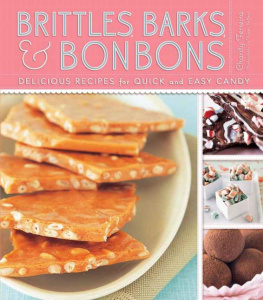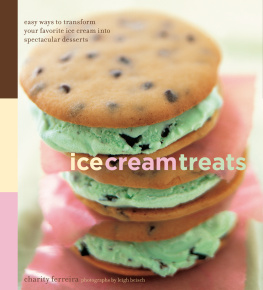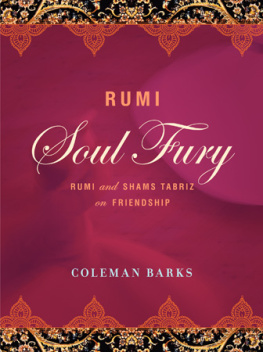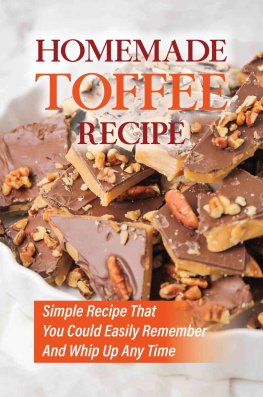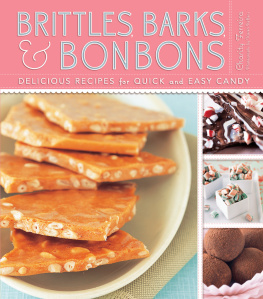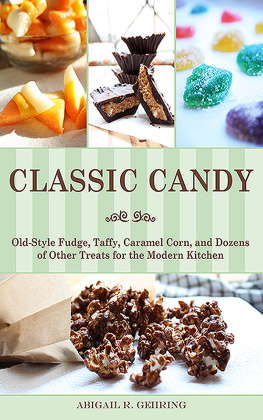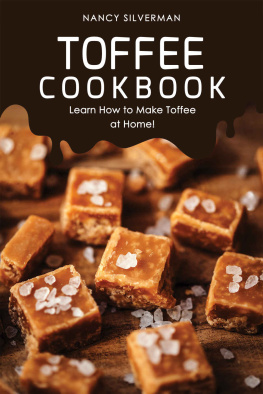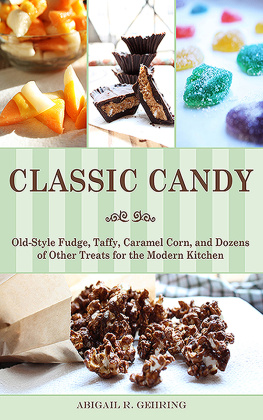

Acknowledgments
I am grateful to many people for making this book possible. First, I want to thank my editor and friend Amy Treadwell, and all of the talented people at Chronicle Books. I am also grateful to Sarah Epstein, Marlene Kawahata, Sue Johnson, and Kelly Pfeifer for testing these recipes and giving me invaluable feedback, and to Julie Rolland for fielding all of my questions about French candy. As always, I am deeply indebted to Kate Washington, whose good advice improves everything I do, and to Debbie Hughes, who inspires my best work. Finally, I want to thank my husband, Damon Allswang. In a manner typical of his support for all of my endeavors, he greeted every piece of candy as if it were the best thing hed ever tasted, and then helped with the dishes afterwards.
For Dylan, Sasha, and Talia,
who are sweeter than all of the candy in this book.
Contents
A bout five years ago, I traveled to Montlimar, France, to write about nougat. The Provenal town is famous for the chewy almond- and pistachio-studded candy, made of egg whites, sugar, and honey, which has a texture somewhere between a Big Hunk bar and the edges of a perfectly staled marshmallow. In town I bought a map, illustrated with little candy icons, that labels the regions of France by the sweets theyre known for. I have it on the wall above my desk, and whenever things get hectic I look at it and think about becoming a candy pilgrim, or at least about planning my next vacation around licorice, chocolate covered cherries, almond paste calissons .
One of the best things about being a food writer is being able to pursue what interests and delights me. Whether Im writing about nougat in Provence, gummy bears in Santa Cruz, saltwater taffy on the Northern California coast, or artisanal chocolate in Berkeley, theres always one wild moment during each interview when I contemplate throwing myself at the feet of the candy maker and begging him or her to take me on as an apprentice. It seems to me that there could be no greater bliss than being surrounded by candy all day, every day.
Candy is so provocative, so transporting. And I dont just mean eating it. I am transported by making it, too. Candy making has a reputation for being difficult, but many kinds of candy are quite simple to make. Caramelizing sugar is a simple process, but its one of the most magical, transformative things you can do in the kitchenturning plain white sugar into a crunchy, amber-colored candy with a distinctive, burnt-sugar flavor. Barks and clusters, likewise, are nothing more than melted chocolate with delicious additions like nuts or dried fruit, resulting in a candy thats much greater than the sum of its parts. And the simplest truffles are merely chocolate, cream, and a few flavorings, rolled into bite-size balls and dusted with cocoa powder.
Over the years, Ive come to appreciate candy not just for its beauty and flavor, but also for its restraint. Often a bite or two of toffee or a piece of chocolate-dipped fruit is more satisfying than a full-sized dessert. Candy is also an especially unique, personal gift. What could be nicer to receive than a bag of golden sea salt-flavored caramels individually wrapped in squares of waxed paper? Or a few pretty pieces of bark or brittle in a clear cellophane bag tied with a ribbon? How about a box of handmade truffles nestled in paper candy cups?
This book is a collection of the candy I love to make, eat, and share. Many of these are my favorite versions of candy that Ive made for years, like the toffees, peanut brittle, and caramels. Others are recipes I developed for specific occasions, holidays, or dinner party menus. Still others are my versions of candy Ive come across while traveling in France, like the nougat, the geles, and the milk chocolate praline. I hope that this book will inspire you to make your own candy, and that some of these recipes will become part of your repertoire.
Chocolate
There are some truly sublime chocolates available today that are well worth the splurge, especially for things like dipping candied orange peel or spreading on top of . However, I admit to a slightly populist leaning when it comes to chocolate, and for most of the recipes in this bookespecially ones where the chocolate is flavored with other ingredientsany good, reasonably priced chocolate is a fine choice. I like Callebaut milk chocolate, and I think both Guittard and Ghirardelli make good-tasting, reasonably priced semisweet and bittersweet chocolates. Trader Joes sells a line of imported Belgian chocolate under its house label that is inexpensive and pleasantly flavorful.
Whether you choose semisweet or bittersweet chocolate is up to you; bittersweet chocolate has a less sweet, more pronounced chocolate flavor. It has become common to see the percentage of cocoa solids noted on the label of dark chocolates. Bittersweet chocolates are usually in the neighborhood of 70 percent cocoa solids, while dark chocolates labeled 50 percent to 60 percent are usually considered semisweet. White chocolate contains no cocoa solids, but check the label to make sure it contains cocoa butter.
Spices, Nuts, and Dried Fruit
Buy spices, nuts, and dried fruit in bulk from somewhere busy, if you can; they are likely to be cheaper and fresher than their prepackaged counterparts. Trader Joes is a great source for nuts and dried fruit.
Sugar
In 1999, the San Francisco Chronicle published a story that rocked the world of every home baker and candy maker who read it. In it, professional baker Carolyn Weil discovered and the Chronicle s test kitchen confirmedthat cane sugar and beet sugar behave differently in certain applications.
The differences between the two are particularly significant in candy making, where sugar is often the primary ingredientand where its behavior at high temperatures can make or break your recipe. In my experience, beet sugar caramelizes less predictably than cane sugar and seems to be more prone to crystallizing.
For these reasons, I always buy C&H granulated sugar. It is the only widely available brand I know of that is specifically labeled cane sugar. If sugar isnt labeled, it may be either beet sugar or cane sugar. I also like C&Hs superfine Bakers Sugar for making candy. The grains are finer than regular granulated sugar, so they dissolve more easily. Bakers sugar is also nice for coating the outside of candies like candied citrus peels or ptes de fruits .
Wrapping and Packaging
Youll be amazed at how much more polished and special homemade candy looks when its presented in the right packagingand how easy it is to present your candy beautifully. If you live near a store that sells candy-making supplies, buy yourself a little stock of fluted paper candy cups in various sizes, candy boxes, and clear cellophane treat bags. Or seek out an online source for these items, such as sugarcraft.com. If you have these packaging supplies on hand, you will almost always have the means of making a personal, handmade gift on short notice.
Baking Sheets and Jelly-Roll Pans
Some of the recipes in this book call for a jelly-roll pana 10-by-15-inch baking pan with 1-inchhigh sides. If the recipe calls for a baking sheet, any cookie sheet will do, either with or without a rim. Baking sheets that are especially battered (I have a few of these in my cabinet) are not the best choices for making brittles and toffees, as the candy tends to stick to places where the finish is scratched, bent, or rusted.
Next page
